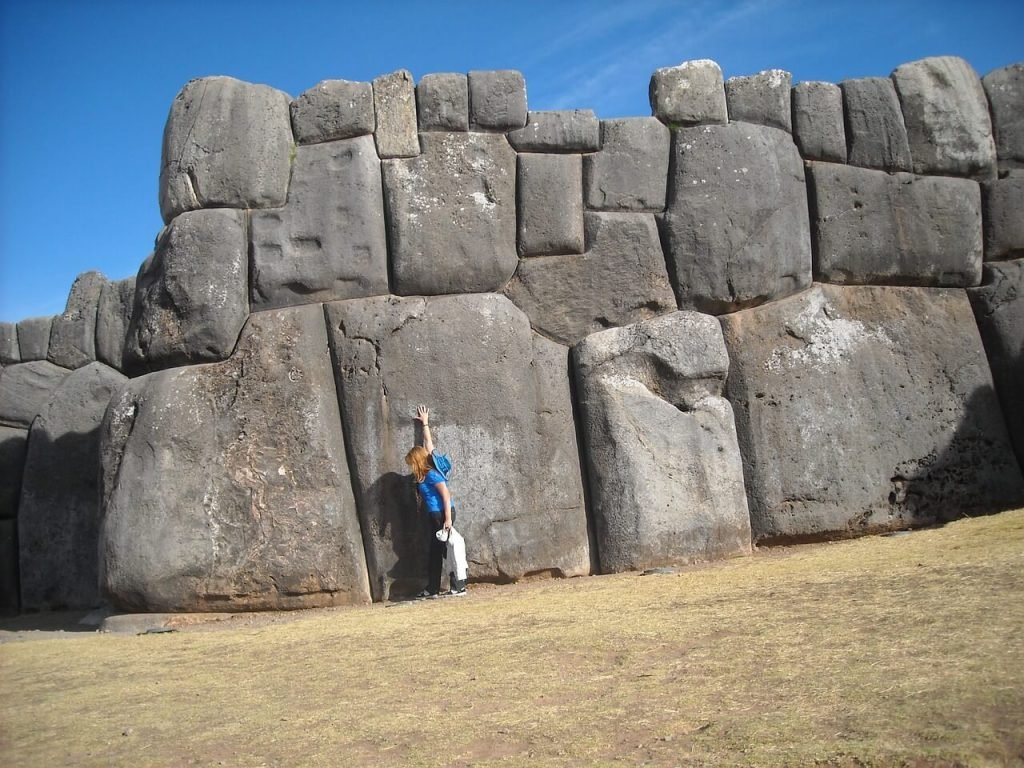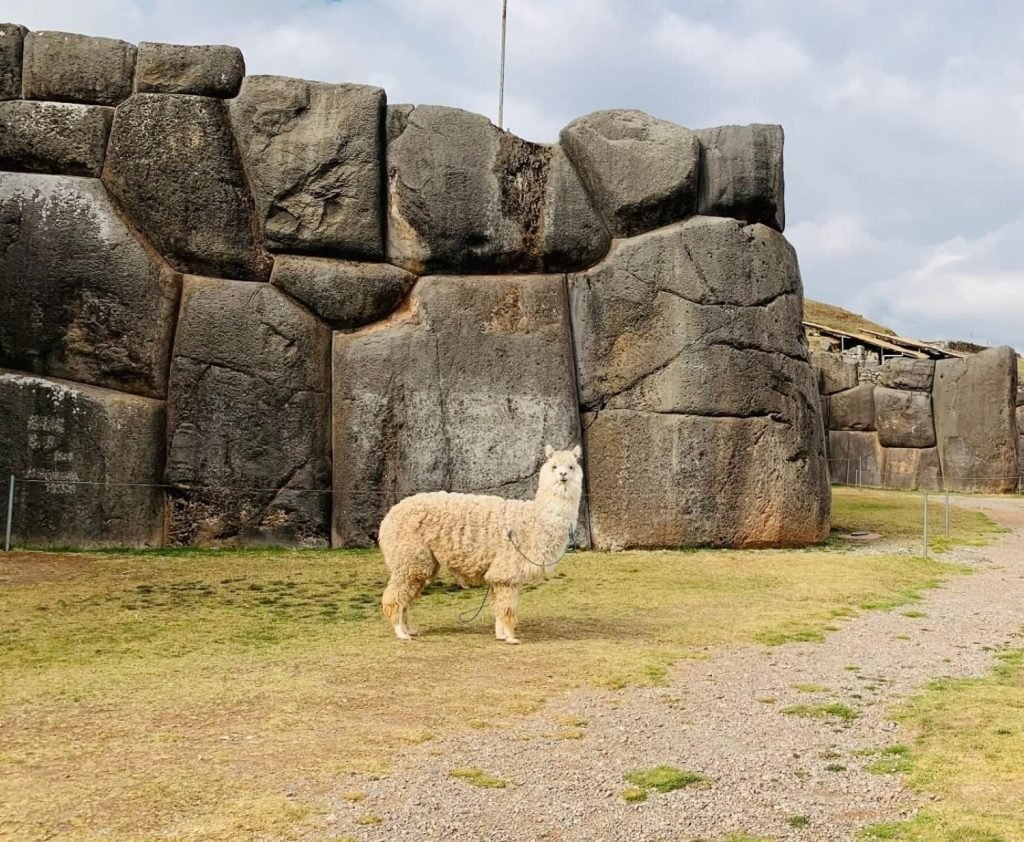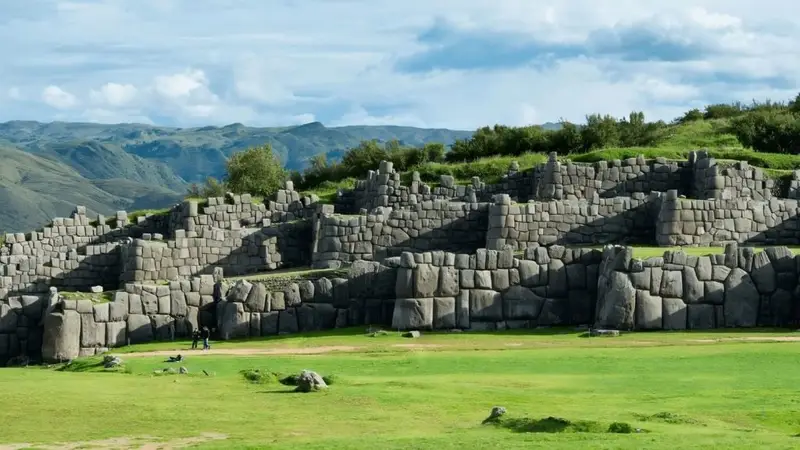The imposing fortress of Sacsayhuaman, a brilliant testimony of Inca splendor. This magnificent construction, which began during the reign of the Inca Pachacutec in the 15th century, attracts worldwide admiration for its grandeur and mystery. In this virtual tour, we will discover the secrets, history and architecture that make Sacsayhuaman an unparalleled wonder.
Location and Significance

Where is Sacsayhuaman located?
Just 2 kilometers north of Cusco’s Main Square, Sacsayhuaman rises 3,700 meters above sea level, covering an area of more than 3,000 hectares. This archaeological site offers impressive landscapes with the presence of llamas and falcons, offering a unique connection with nature.
What does Sacsayhuaman mean?
The name Sacsayhuaman, in Quechua, translates as “place where the falcon is satiated”. This denomination reveals the ancestral presence of these majestic birds in the area. Although it is presumed to be a fortress, there is also speculation about its ceremonial use. During the arrival of the Spaniards in the 16th century, they called it a ‘fortress’ after repelling the attack during the Inca rebellion of Vilcabamba.
Discovering Inca Architecture

How did the Incas build Sacsayhuaman?
The enigma persists: How did the Incas erect this marvel with structures implausible for the time? Sacred constructions such as towers, shrines, warehouses, roads and aqueducts are part of this architectural masterpiece. The main wall, built in zigzag with gigantic stones weighing up to 125 tons, is a testament to Inca construction genius.
What to see in Sacsayhuaman?
From its imposing towers, such as Muyucmarca, Paucamarca and Sallaqmarca, to the intricate chincanas and impressive rodaderos, every corner of Sacsayhuaman tells a fascinating story. We also discover the enclosures, the jagged walls and trapezoidal gates that connect to Cusco’s Plaza de Armas.
The towers
Located on the zigzag walls, the towers like Muyucmarca, Paucamarca and Sallaqmarca stand out. The tower of Cahuide has an intriguing history, witnessing the Inca resistance in 1536.
Group of Enclosures
Strategically placed rooms near the towers face the Plaza de Armas, connected by trapezoidal doors.
The Walls (Los Baluartes)
Formed by jagged platforms, the massive limestone walls fit together perfectly, puzzling the early Spaniards who attributed them to demons.
The Gates
Trapezoidal doors in the middle part of the bastions, with names like Ajawanapunku, T’iopunku and Wiracochapunku, served as entrances to the area of the towers.
Suchuna (Rodaderos)
Natural formations of diorite, the rocks molded over time offer a unique spectacle.
The throne of the Inca
Known as the throne of the Inca, or K’usilluc Jink’ian (where the monkey bows), it is a masterpiece of symmetry. Its meticulous polishing and perfect form have given it the status of ‘Throne’.
Chincanas (Tunnels)
Two subway tunnels, the largest connecting to the Coricancha, add to the mystery of the site, with tales of travelers who failed to find their end.
Visiting Sacsayhuaman

How to get to Sacsayhuaman?
The fortress is only a 10-minute drive from the Plaza de Armas or a 45-minute walk. Alternatively, the City Tour offers transportation and access with the Cusco Tourist Ticket.
How much does it cost to visit Sacsayhuaman?
To explore this historic enclave requires the Cusco Tourist Ticket, which costs 70 soles. Another option is a ‘City Tour Cusco’, which covers Sacsayhuaman, Qenqo, Pucapucara and Tambomachay, with prices varying according to the agency.
Important information about Sacsayhuaman

Sacsayhuaman is located at 3,700 meters above sea level, with a dry and temperate climate. Open from 7 a.m. to 6 p.m., the site offers panoramic views and a unique experience. History is interwoven with architecture in a journey that transcends time.
Cost
To visit Sacsayhuaman, the Cusco Tourist Ticket is required, with a cost of 70 soles. Another option is the ‘City Tour Cusco’, with a variable price between 30 and 60 dollars. This includes entrance to Sacsayhuaman, Qenqo, Pucapucara and Tambomachay.
Weather, Schedule and More
- Climate: Temperate and dry, with an average temperature of 12°C (54°F). The dry season (April to October) is ideal for visits.
- Hours: Open from 7 a.m. to 6 p.m.
- Altitude: Approximately 3,700 meters above sea level.
- Size: Huge, covering 3,093 hectares.
Frequently Asked Questions about Sacsayhuaman
1) Is Sacsayhuaman open all year round?
Yes, except for emergencies, it remains open.
2) Is there an entrance ticket only to visit Sacsayhuaman?
No, access is with the Cusco Tourist Ticket, including other sites.
3) Can I get tour guides at Sacsayhuaman?
Yes, guides are available at the entrance.
4) What is the most famous construction in Sacsayhuaman?
From the walls to the Inca throne, each structure has its charm.
5) What does Sacsayhuaman represent?
The Quechua word means ‘satisfied falcon’, reflecting the abundance of these birds.
6) What can you do in Sacsayhuaman?
A historical tour and panoramic views are not to be missed.
7) When is the best time to visit Sacsayhuamán?
Sunny days from April to October are ideal.
8) Are there tours to Sacsayhuamán?
Yes, the ‘City Tour Cusco’ offers a complete experience, with variable prices.
To explore Sacsayhuamán is to immerse yourself in Inca grandeur, a journey where history merges with monumental architecture. The fortress awaits, eternal witness of a glorious past.





